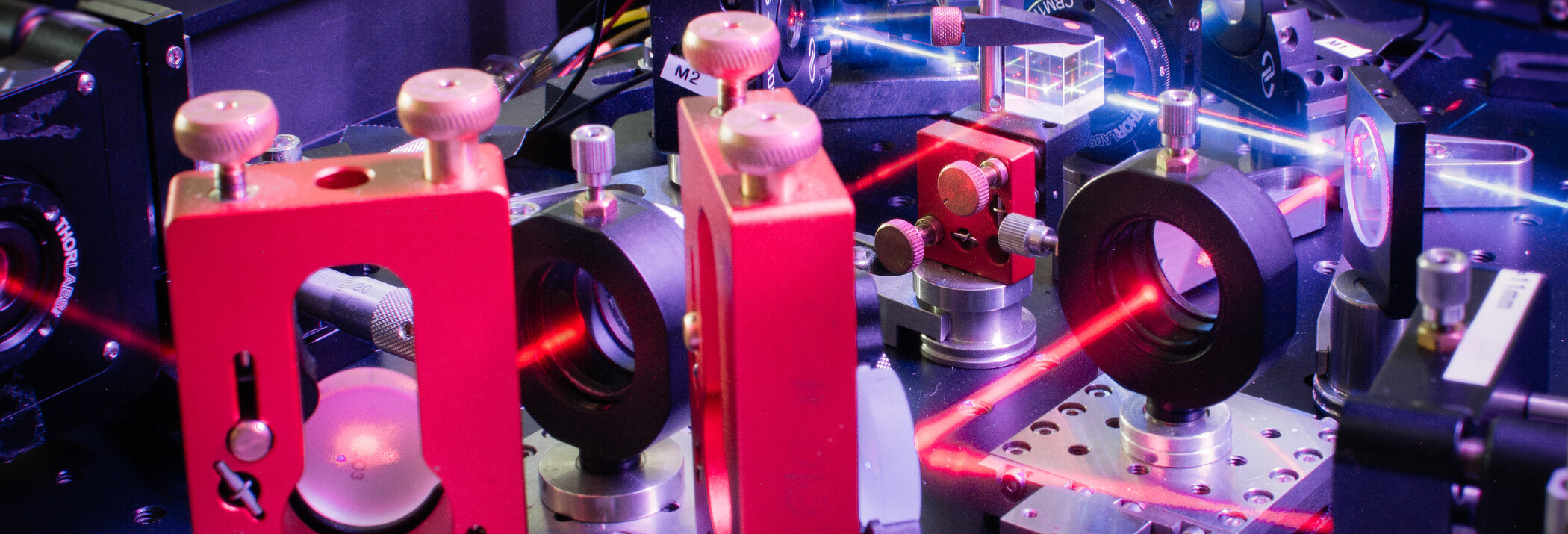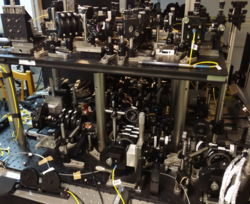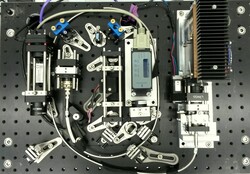Entangled photons: The main resource of our research
The design and construction of highly efficient sources of entanglement lies at the very heart of our group’s experiments. By making use of conversion processes in non-linear crystals, we create entangled photon pairs with excellent fidelity at high production rates. Our source expertise is the most important enabler for the quantum optics experiments we pursue.
Creating entanglement
One of the brightest sources in our labs so far was a crossed-crystal scheme source optimized for the near-infrared, making it especially useful for free-space applications [1]. Another important step towards standardization of source quality was the deployment of two separate crossed-crystal sources producing indistinguishable photons [2]. We also constructed an extremely rigid stand-alone source capable of surviving accelerations up to 30g [3]. Just recently, we demonstrated a completely new way of entanglement creation by utilizing the “HOM-interference” effect in time-reverse [4].
Telecom Wavelengths
The aforementioned three sources work in the near-infrared around 810 nanometers wavelength. Since classical telecommunication fibers use 1550 nm light, we have also put efforts into entanglement production in this communication band and successfully tested quantum communication over 100 km links (see Fiber-based Quantum Communication).
[1] F. Steinlechner et al., “A high-brightness source of polarization-entangled photons optimized for applications in free space,” Opt. Express, vol. 20, no. 9, pp. 9640–9649, 2012.
[2] T. Scheidl, F. Tiefenbacher, R. Prevedel, F. Steinlechner, R. Ursin, and A. Zeilinger, “Crossed-crystal scheme for femtosecond-pulsed entangled photon generation in periodically poled potassium titanyl phosphate,” Phys. Rev. A - At. Mol. Opt. Phys., vol. 89, no. 4, pp. 1–5, 2014.
[3] M. Fink et al., “Experimental test of photonic entanglement in accelerated reference frames,” Nat. Commun., vol. 8, p. 15304, 2017
[4] Y. Chen et al., “Polarization entanglement by time-reversed Hong-Ou-Mandel interference,” Phys. Rev. Lett., vol. 121, no. 20, p. 200502, 2018



